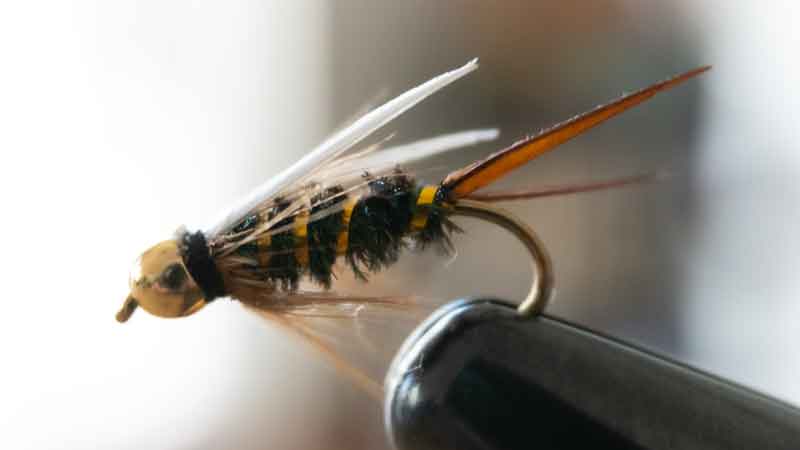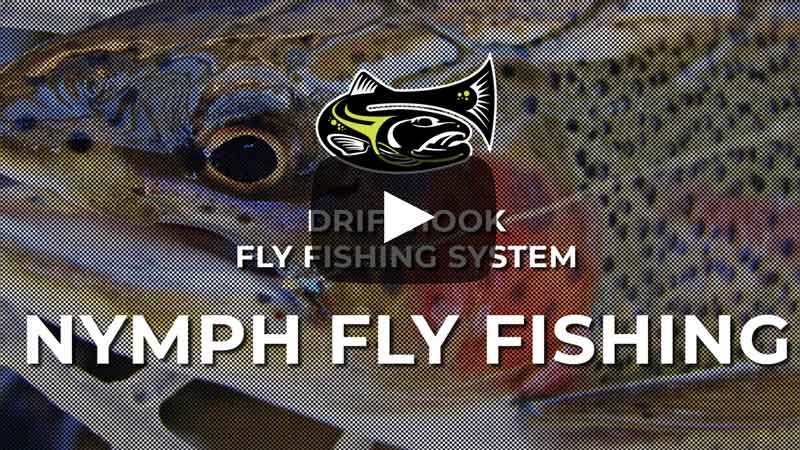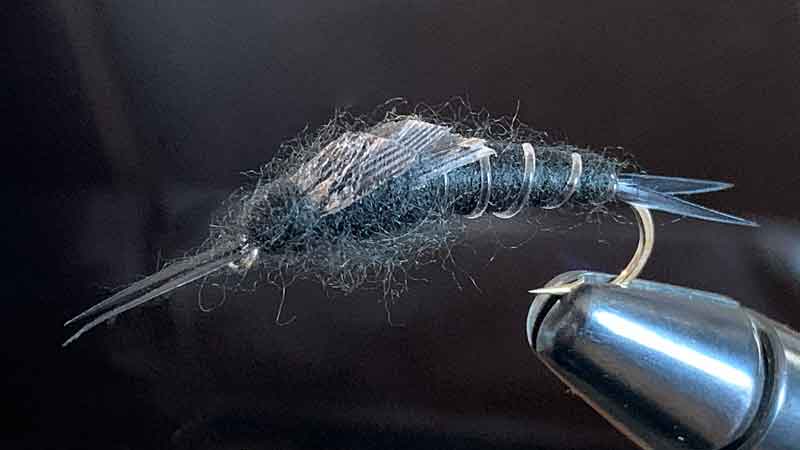Fly fishing, a beloved pastime for anglers worldwide, demands skill, patience, and the right tools. Among these tools, flies play a pivotal role in mimicking the fish's natural prey, enticing them to bite. One such fly that has earned a place of honor in the fly boxes of both novice and experienced anglers is the Bead Head Prince Nymph. This fly is not just a staple for trout fishing but a versatile pattern that proves effective in a variety of fishing conditions.

The Bead Head Prince Nymph's origins trace back to the 1930s; originally created by Minnesota brothers Don and Dick Olson and later popularized by western angler Doug Prince, after whom it was named. Doug Prince crafted it to imitate the stonefly nymphs prevalent in many trout streams. Its initial design has undergone numerous modifications, with the addition of a bead head being one of the most significant. This small yet impactful change enhances the fly's ability to sink quickly and exhibit a realistic motion underwater, making it an indispensable asset in an angler's collection.
What is the Bead Head Prince Fly Pattern?

The Bead Head Prince Fly Pattern is an artificial fly used in fly fishing. It’s designed to imitate the natural insects that trout and other fish feed on underwater. This particular pattern is known for its ability to attract fish thanks to its realistic appearance and movement in the water.
Key Components
- Bead Head: The small bead at the front of the fly, usually made of gold or copper, serves two main purposes. First, it adds weight, which helps the fly sink quickly to the bottom of the stream where fish often feed. Second, the shiny bead catches the light, making the fly more noticeable to fish.
- Hook: The fly is tied onto a hook, which comes in various sizes. For the Bead Head Prince, hooks are typically sized between 10 and 16.
- Thread: The thread is used to secure all the materials to the hook. It’s usually black or brown to blend in with the rest of the fly.
- Tail: Made from brown goose biots (stiff, pointed feathers), the tail mimics the natural tail of a stonefly nymph, a common prey for trout.
- Body: The body of the fly is made from peacock herl, which gives it a natural, iridescent look that fish find irresistible.
- Ribbing: A thin wire, usually gold or copper, is wrapped around the body to add durability and mimic the segmented body of an insect.
- Wing: White goose biots are used to create a forked wing on top of the fly, enhancing its lifelike appearance.
- Hackle: Soft feathers, typically brown or furnace-colored, are wrapped around the fly to simulate the legs of a nymph and add to its realistic look.
Why is Bead Head Prince Nymph Effective?

The Bead Head Prince Nymph is effective because it closely resembles the stonefly nymph, a primary food source for many types of fish, particularly trout. The added bead head ensures that the fly sinks quickly, reaching the depths where fish are feeding. Its shiny bead and iridescent body make it highly visible, even in murky waters, increasing the chances of attracting a fish’s attention.
To use the Bead Head Prince Nymph, you cast it upstream and let it drift naturally with the current, mimicking the movement of a real insect. This technique is known as "nymphing." You may also add small weights or a strike indicator to help control the depth and detect bites more easily.
History of the Bead Head Prince Nymph

The Prince Nymph has a rich history in the fly fishing world. Originally developed in the 1930s by Doug Prince, this fly was designed to imitate stonefly nymphs, which are a common food source for trout. Later, a bead head was added, enhancing its effectiveness by adding weight, making it sink faster, and giving it a lifelike movement in the water. This modification transformed the Prince Nymph into one of the most popular and reliable nymph patterns used by anglers today.
Materials needed for Bead Head Prince Nymph

Before you start tying the Bead Head Prince Nymph, gather the following materials:
- Hook: Nymph hook sizes 10-16
- Bead: Gold or copper bead, sized to match the hook
- Thread: Black or brown 6/0 or 8/0
- Tail: Brown goose biots
- Body: Peacock herl
- Ribbing: Gold or copper wire
- Wing: White goose biots
- Hackle: Brown or furnace hen hackle
- Head cement: To finish the fly
How to tie Bead Head Prince Nymph
Tying the Bead Head Prince Nymph may seem daunting, but following these steps can create an effective fly. Here’s a summary of the process based on this video tutorial:
- Slide the bead onto the hook: Begin by placing the bead on the hook and securing the hook in your vise.
- Attach the thread: Start your thread behind the bead and wrap a solid thread base down to the bend of the hook.
- Tie in the tail: Select two brown goose biots and tie them in at the bend of the hook, ensuring they splay outward.
- Add the ribbing: Attach the gold or copper wire at the base of the tail and secure it along the hook shank.
- Create the body: Tie in several strands of peacock herl and wrap them forward to form a bushy body, then secure them with the thread.
- Wrap the ribbing: Counter-wrap the wire ribbing over the peacock herl body to add durability and segmentation.
- Prepare and tie in the wing: Select two white goose biots, place them back-to-back, and tie them in at the thorax area so they extend over the body.
- Add the hackle: Tie in a brown or furnace hen hackle and make several wraps to create a collar behind the bead.
- Finish the fly: Build a small thread head, whip finish, and apply head cement for durability.
Prince Nymph Variations
The Prince Nymph has several variations that can be just as effective, depending on the fishing conditions and the target species. Here are a few notable ones:
Purple Prince Fly Pattern

The Purple Prince fly pattern is a classic and versatile choice in fly fishing, known for its effectiveness across various freshwater environments. Featuring a distinctive purple body with peacock herl wrapped around it, this fly is adorned with a white wing of calf tail or similar material and a red or purple hackle. Its royal appearance coupled with its ability to mimic various aquatic insects makes it irresistible to trout, particularly in streams and rivers. Whether imitating caddisflies, stoneflies, or even small baitfish, the Purple Prince consistently entices strikes, making it a go-to option for anglers seeking success on the water.
Formerly Known as Prince Fly Pattern

The Formerly Known as Prince fly pattern, aptly named for its previous moniker, the Prince Nymph, is a celebrated staple in fly fishing renowned for its effectiveness in enticing trout. This pattern typically features a distinctive peacock herl body with a striking white wing of calf tail or synthetic material and a collar of brown hackle
Prince Nymph Jigged

How to fish a Bead Head Prince Nymph
Fishing the Bead Head Prince Nymph effectively requires understanding the basics of nymphing techniques. Here are some tips adapted from the comprehensive guide on Drifthook's blog:
- Choose the right setup: Use a rod with a sensitive tip and a weight-forward floating line. A leader tapered to 4X or 5X is ideal for this nymph.
- Adjust the depth: Ensure your fly is bouncing along the bottom where nymphs naturally dwell. Adjust your strike indicator or add split shot to achieve the right depth.
- Use a dead drift: Cast upstream and allow the fly to drift naturally with the current. Mend the line to reduce drag and keep the fly at the correct depth.
- Detecting strikes: Pay close attention to the strike indicator. Even the slightest movement could indicate a strike, so set the hook quickly.

The Bead Head Prince Nymph is a versatile and effective fly that every angler should have in their arsenal. By understanding its history, gathering the right materials, mastering the tying process, exploring variations, and employing proper fishing techniques, you can significantly increase your chances of success on the water. Whether you're fishing in fast currents or still waters, the Bead Head Prince Fly Pattern remains a go-to choice for attracting and catching trout.






![Bead Head Hare's Ear Nymph [Tie, Fish, Catch]](http://drifthook.com/cdn/shop/articles/Bead-Head-Hare_s-Ear-Nymph-Drifthook.jpg?v=1718051684&width=800)